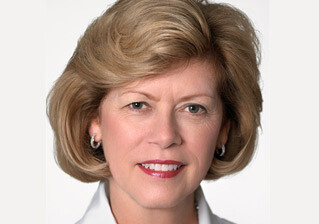Mobile Menu
- Education
- Research
-
Students
- High School Outreach
- Undergraduate & Beyond: Community of Support
- Current Students
- Faculty & Staff
- Alumni
- News & Events
- Giving
- About

 The most important advances in medical science often come from unexpected discoveries in basic science laboratories. They are the sparks that ignite directions for new therapies and new treatments. They are driven by the inquiry of researchers following their own lines of creative exploration in order to understand the biological processes that underpin our ability to improve human health. Fundamental research like this happens most frequently in a university setting — where researchers are free to expand and deepen our knowledge by following unexpected paths to answer critically important health questions.
The most important advances in medical science often come from unexpected discoveries in basic science laboratories. They are the sparks that ignite directions for new therapies and new treatments. They are driven by the inquiry of researchers following their own lines of creative exploration in order to understand the biological processes that underpin our ability to improve human health. Fundamental research like this happens most frequently in a university setting — where researchers are free to expand and deepen our knowledge by following unexpected paths to answer critically important health questions.
For over a hundred years, this philosophy of discovery has been behind U of T Medicine’s greatest discoveries — from insulin, to the discovery of stem cells and identification of the first cystic fibrosis gene. Today, that necessary approach to biomedical research is threatened by reduced funding for both the operational cost of the infrastructure to house these endeavours and for the scientific research itself. This presents a significant budgetary issue for universities and potentially a fundamental challenge to the core research role of the university.
That is why, as I have mentioned previously, we are working with peer institutions to advocate for greater support from the Canadian Institutes of Health Research and other funding councils. In addition, we are bringing to the forefront of this discussion the significant indirect costs of research that universities are covering on a day-to-day basis. While we will continue to seek greater support from traditional funding sources, we also need to attract new champions (volunteers and donors) who can support our research fundraising efforts.
In a time of increasing competition for scarce research operating dollars, the Faculty of Medicine Research Office has established a grant development team to assist researchers in writing the most compelling grants. The team has initially focused on CIHR operating and team grants, with a remarkable success rate. In the open operating grant program over the last three years, the Canada wide success rate has averaged 20 per cent; the success rate of researchers assisted by the grant editors now averages 40 per cent. The grant development team is most effective when paired with a rigorous internal scientific review from academic colleagues in the relevant field.
A new focus for the team is to identify new sources of operating grant funding from national and international foundations that members of our research community have not traditionally accessed. While these Foundations cannot replace the level of funding traditionally received from CIHR, these new sources will both help mitigate the impact of the current transitions in CIHR and in the longer-term supplement the traditional tri-council funds.
We must also be effective in telling our stories about basic science discoveries. This brings me to a recent example of excellent communications material created by the Donnelly Centre for Cellular and Biomolecular Research, which is Know The Donnelly. This publication summarizes the research agenda for each Principal Investigator in the Donnelly Centre in clear language that supporters as well as experts can appreciate. Explaining the potential of our research is essential to attract the support we need.
Attracting philanthropic support through effective communications and recruitment of volunteer champions, including members of our alumni, will enable us to obtain more financial independence to support our innovative and world-class basic science research. This approach is necessary to fulfill our academic mission and is why it lies at the heart of our fundraising campaign, Boundless. Our Faculty will continue to prioritize basic biomedical and translational research, and we will work tirelessly to gain the support it deserves.
Catharine Whiteside
Dean, Faculty of Medicine
Vice-Provost, Relations with Health Care Institutions